Environment first – Companies are interested in sustainability
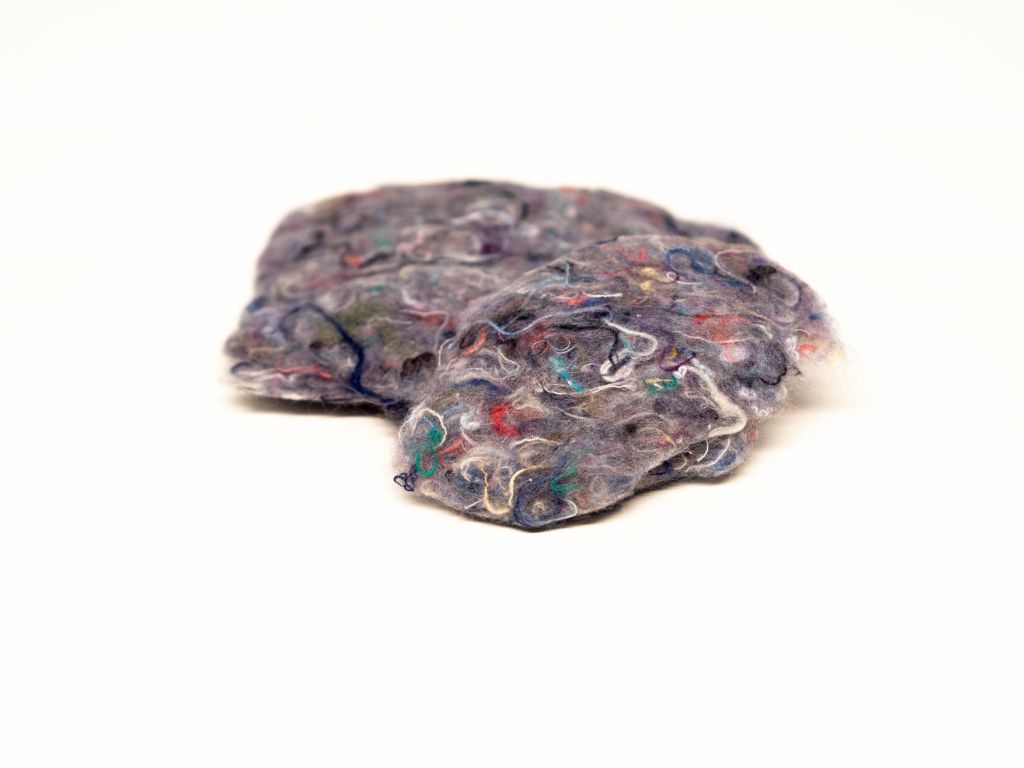
The second phase of the Telaketju project started with a background survey to map the starting points for the public project. The survey was sent to companies and organizations that are part of the Telaketju 2 project. Based on the results, the project plans its research and selects which parts of it are highlighted. The different work groups base their work on the results of the survey as well. The survey had 25 respondents in total, ranging from micro and small businesses, which 76% of the respondents represent, to large ones.
Business models
Every participant’s business models and strategies are somehow linked to circular economy. Circular economy is a financial model where more items aren’t produced continuously, but consumption is rather based on products as a service, and sharing, renting and recycling instead of ownership. The value of the materials remains in society as long as possible, and economic growth is not dependent on the consumption of natural resources.¹
There are still many challenges in implementing circular business models. The most crucial one is to be establish a profitable business. Other obstacles are people’s attitudes, missing value chains of textiles and the high cost of end-of-life textile processing, for example. The development of circular economy business models is still in its early stages and the treatment and recycling processes for end-of-life textiles still need to advance.
The participating companies and organizations offer many kinds of main products and services from clothing to cleaning materials and packaging materials. Waste management companies and consultant services also took part in the survey.
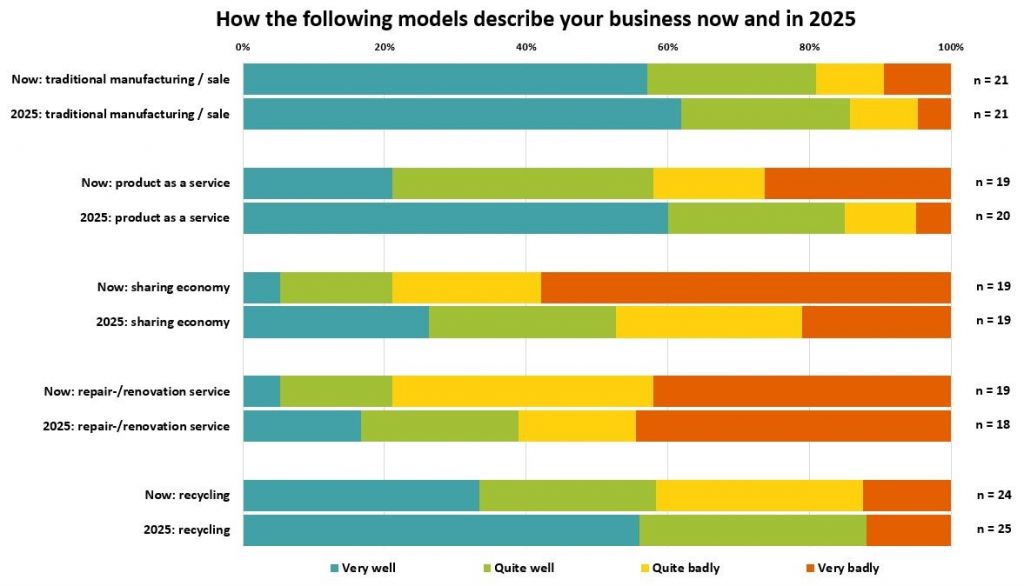
Survey participants were asked about their current business models and how they would like to develop them by the year 2025. Regarding the traditional manufacturing and selling model, there will be no apparent change by the year 2025. On the other models there would be more change happening by 2025, mostly improvement.
The circular business models, product as a service, sharing economy and recycling, were seen to grow significantly in the future. To meet these goals, most of the survey participants thought that textile materials need to change, technology needs new innovations and business models need to change. A minor part of the participants also needed change in consumers’ attitudes, openness, funding, partnership or utilization of recycled fibers.
When talking about the most important requirements that the survey participants had for their own collection, durability of materials and accessories, commercialism, good value for money and used material were the most important ones. The least important features were trendiness, uniqueness and customization.
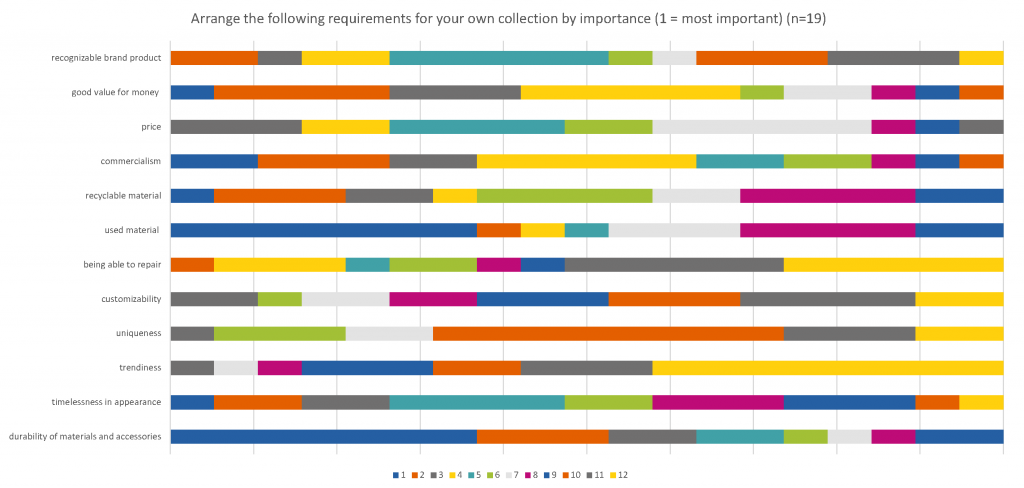
End-of-life textiles
All the respondents had used recycled or reused textiles in their company or organization to some extent. According to the answers given, in most of the respondent companies the amount of usage is significant, while the second-most picked option was that the usage of recycled or reused textiles is only minor or non-existent.
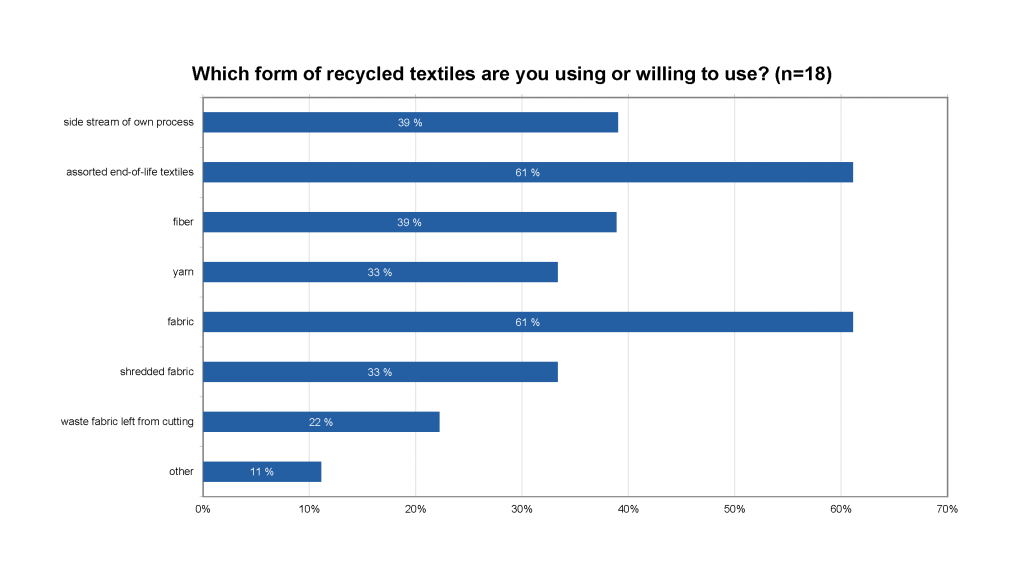
As you can see from the diagram above, when asked about which form they use or would like to use in terms of end-of-life textiles, over half of the respondents are using or are willing to use sorted end-of-life textiles. One third of the respondents were also interested in fiber, yarn, textile chaff and edge trim waste.
The sorting of end-of-life textiles is done by hand at the moment and the process is quite slow but nevertheless more precise than the mechanical processes that we have now. Less than fifth of the organizations thought that mechanical textile sorting would meet their needs the best way. Over half of the respondents did not find the sorting method significant as long it is done in a way that’s economically efficient. The rest would prefer to continue sorting by hand.
The reasons for not wanting to implement mechanical sorting varied. The most common doubt on mechanical sorting was the ability to accurately sort and recognize different kinds of mixed materials and non-usable textiles. Other bottlenecks were thought to be lack of standardization, too high initial expenses and other special needs that the mechanical sorting can’t yet offer.
The most important materials that the respondents wanted to be separated were 100% cotton, 100% wool and 100% polyester. Other mono-materials including polypropylene and linen weren’t nearly that interesting to the organizations. Cotton/polyester blends were important to a bit over fourth of the respondents and other mixed textiles only to few percent of the respondents. When asked about the materials that need to be removed from the circulation of end-of-life textiles, the most common answer was dirty textiles. Other, less common answers were non-biodegradable synthetic fibers, reusable materials, microplastics, elastane, small metal objects, microchips (in the future), customers markings, fireproof materials and illegal chemicals.
The mechanical sorting to identify the material composition is important to almost all the respondents. Most important sorting criteria were textile color and fabric. When asked about if the organization is going to send material to the mechanical identification bit less than half said yes and rest said no. Those who said yes were going to send materials like cutting waste, knitted fabric, work clothes and all kinds of common textile materials.
Generally, organizations have different needs for the further use of sorted end-of-life textiles. An organization might want to use 100% cotton fiber only, while another company might want to use textile pieces that are of a certain size and color.
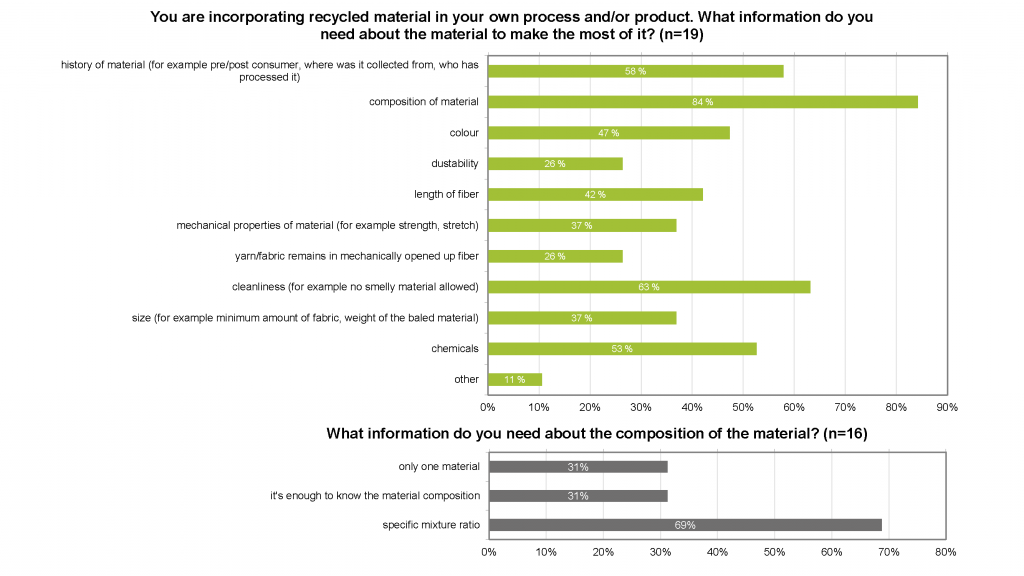
When asked about what information companies need about the materials, the most common answers (over 50% of the participants) were the composition of the materials, cleanliness of the materials, the history of the materials (for example pre- or post-consumer, where collected or who has processed) and chemical usage. Most of the respondents said that they only need the composition of the materials but one third also wanted to know about the mixture ratio. (Diagram above)
Responsibility and sustainability
Corporate social responsibility means that the company is working for to increase sustainable development in the company. The activity of a responsible company is reliable, economic, socially acceptable and respects the nature.²
Social responsibility plays a big part in the participant companies’ and organizations’ business. About one third of the companies answered that it is documented in their strategy. It is an important focus of the business strategy for all the participants, however. Activity is built depending strongly on responsible action in social, ecological and financial ways. Local manufacture, choice of materials and production custom are based on social responsibility in many of the answers. Being socially responsible can even be an economical advantage for businesses. The initial mapping survey revealed that more than four out of five businesses have customers that want to know about the social responsibility of products and services.
Sustainable development is an ongoing and structured process where society undergoes changes with the aim of securing desirable living conditions for the current and future generations. This means that environment, people and economy are taken coequally into account in decision making and in activity.³ Sustainable development in business has to take into account all the same principles.
Almost four out of five companies think that sustainability is an important factor to their clients, and approximately the same amount said that clients ask about the social responsibility strategy of the company. This is quite a clear sign that people are becoming more and more aware about the environment and how their choices affect it.
Minna Ainonen, Aleksi Leppänen, Ilona Engblom
Turku University of Applied Sciences
Graphs:
Kaisa Ahonen, Aleksi Leppänen
Turku University of Applied Sciences
